
Boehmeria cylindrica
(False Nettle)
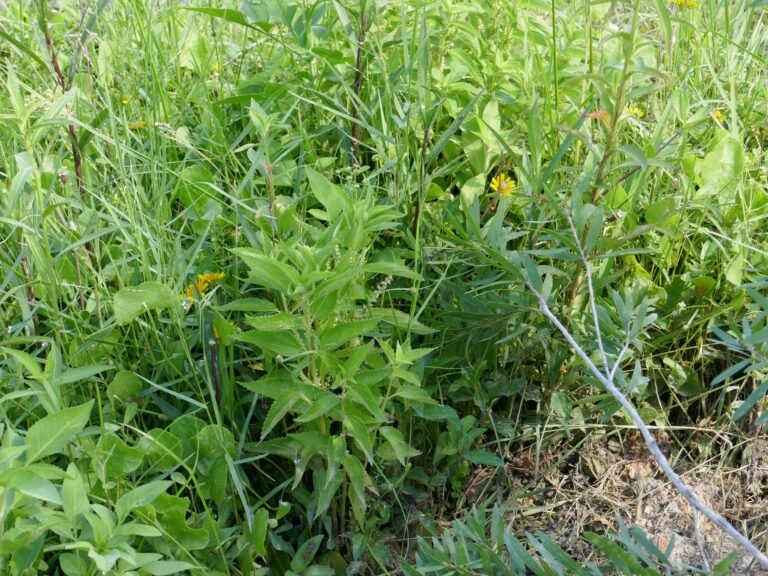
Common Names, Latin Name, and Family
Common names include bog hemp, false nettle, and small-spike false nettle.
Its Latin name is Boehmeria cylindrica.
It is in the Urticaceae, or nettle, family.
There is one other Boehmeria in Florida (Boehmeria nivea), but it is a non-native. Its common name is ramie and it is used for fiber and fabric. Its leaves are alternate with white dense pubescence. It is native to China.
Stinging nettle (Urtica dioica) looks quite similar to false nettle so be careful if you touch the plant to see which one it is because stinging nettle stings for hours and hours.
Form
False nettle is a perennial wildflower that grows to a height of about 3 to 4 feet and just about as wide. Once it goes to seed the patch will widen as new plants appear. If grown in shady areas it gets tall and lanky with less foliage.
It also spreads by roots if the ground is disturbed nearby so the existing clump of plants can grow in size and spread out. As with most plants once the ground is disturbed some seeds may germinate and small seedlings that weren’t getting enough light will begin to grow larger.
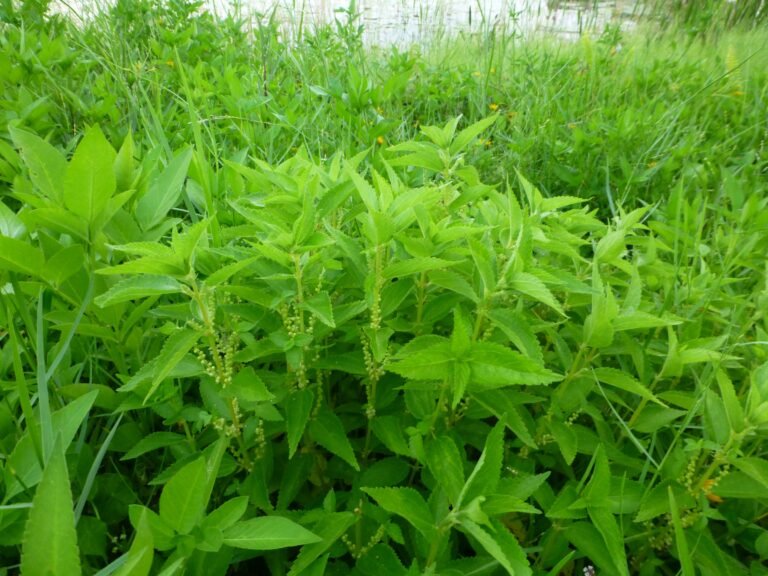
Leaves
False nettle leaves are opposite and slightly pubescent when young and range in length from 1 to 4 inches.
They are lanceolate to ovate in shape with toothed margins. They appear at the end of stalks that are short or long depending upon the amount of sunlight.
The leaf surface is rough with three distinct veins.
There are no stinging hairs anywhere on this plant.
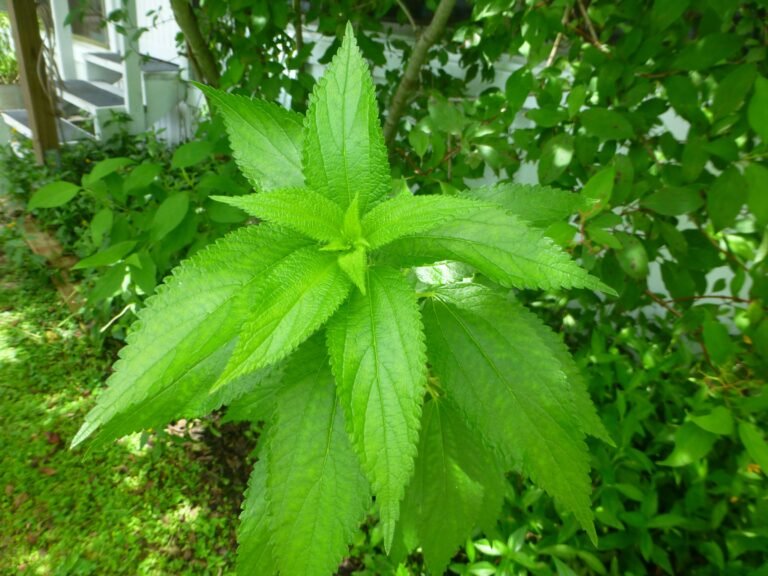
Flowers
The flowers are born on small branches that come out of the main stem at the leaf stalk bases.
The tiny flowers are greenish yellow in color and lack petals. Even though they lack petals they do have beautiful stamens and sepals (four of each) and that is what appears to be the flower when not inspected closely. The flowers grow very close together on the flowering branch.
False nettle flowers in the spring, summer and fall.
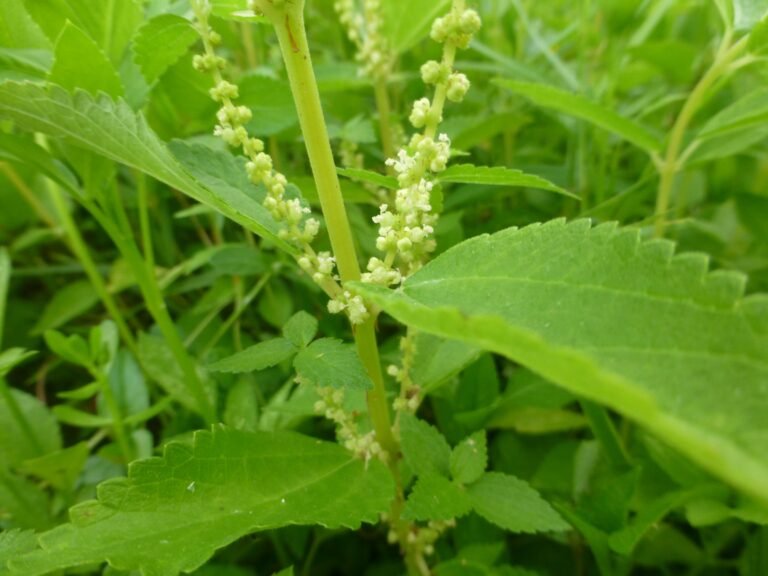
Fruit / Seeds
Once the flowers get pollinated fruit develops into tiny brown seeds (1 mm across). They do not split open but stay whole.
The seeds grow along the flowering branch and each one has one or two leaves at the end. The area of stalk that contains the seeds can be from 2 to 3 inches in length.
I have false nettle seeds for sale at my Ebay Store here – https://www.ebay.com/itm/257071127553
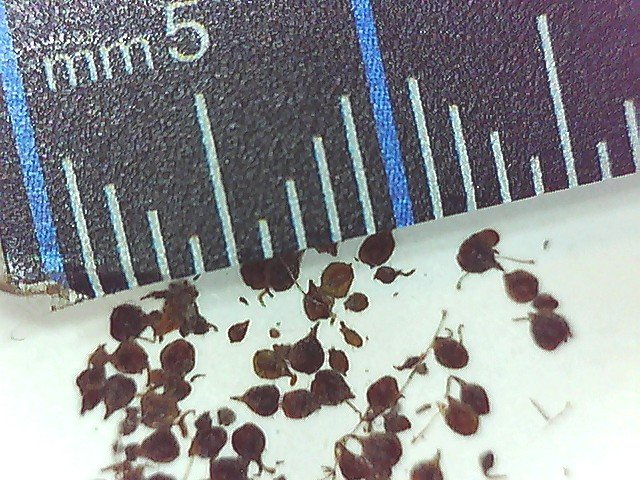
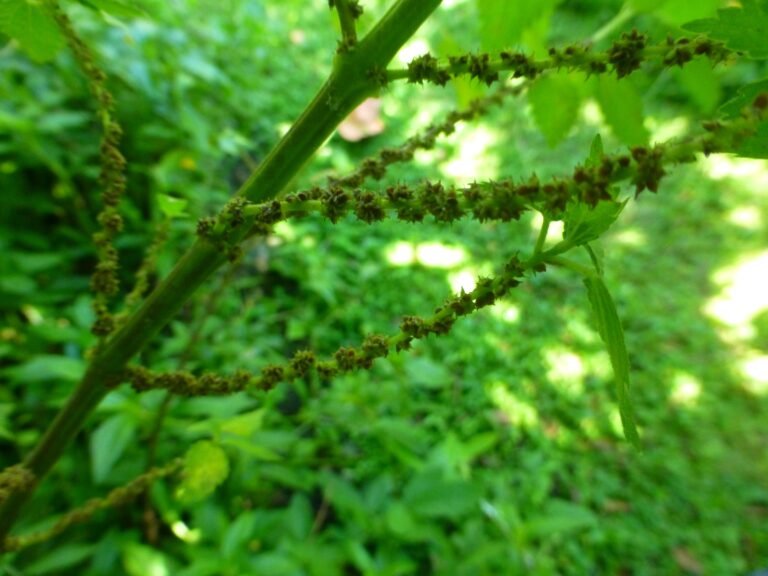
Habitat
It occurs naturally in riparian areas such as swamps, lake and pond margins, wet fields, stream banks, marshes, wet woods, and wet roadside ditches. In my opinion it is easiest to identify when in bloom.
Native Range
It is found throughout the entire state of Florida and all throughout the Southeastern Unites States.
“It is widespread in eastern North America and the Great Plains from New Brunswick to Florida to Texas to Nebraska, with scattered reports of isolated populations in New Mexico, Arizona, and Utah as well as in Bermuda, Mexico, Central America, the West Indies and South America.” [source – https://www.botanicalrealm.com/plant-identification/false-nettle-boehmeria-cylindrica/]
Landscape Use
False nettle grows in an amazing variety of conditions. It can grow in dry to wet soils, and it can grow in full sun to almost complete shade. In shady spots it tends to get lanky and the foliage is not as lush so if you’re planting it for the butterflies you will get better foliage for them in sun with moist soil.
It’s a great perennial wildflower in the butterfly garden for a problem area that may hold water. However, it does not tolerate salt water intrusion at all, not even brackish, unfortunately.
It can be grown in just about any soil type from clay, sand, loam or heavy organic.
It looks lush and attractive in its best site which is sun and moist soil. It will look less lush in shade and once the caterpillars find it and start eating it so it’s best to interplant it or put it in a natural area where other plants can fill in when it starts to look thin and unattractive.
It would be ideal in problem areas such as places that hold water for longer than normal periods.
I like to grow mine in wild areas along with other wildflowers and butterfly host plants.
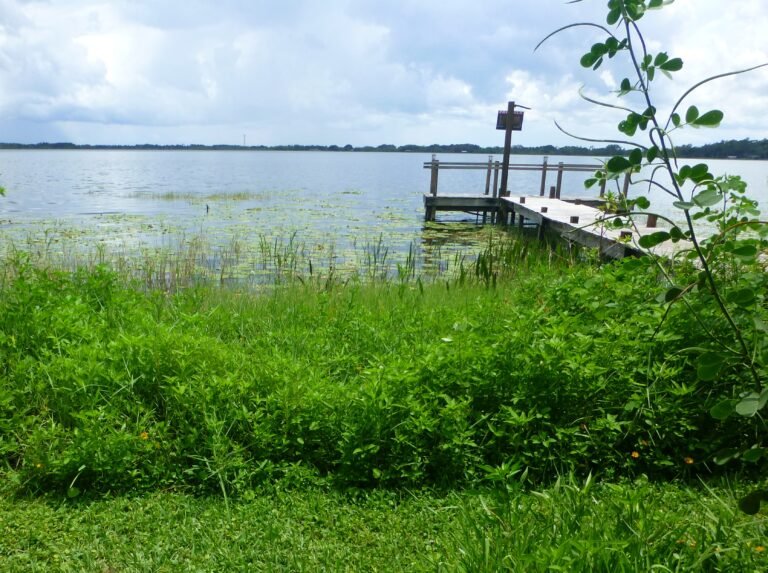
Wildlife Use
It is the larval host plant for the red admiral, question mark and Eastern comma butterflies.
This is a drop dead easy plant for the butterfly garden that can support three types of butterflies. If you enjoy butterfly gardening I suggest you give it a try.
Remember to plant in as many locations as you can so the butterflies will have enough host plants for their caterpillars.
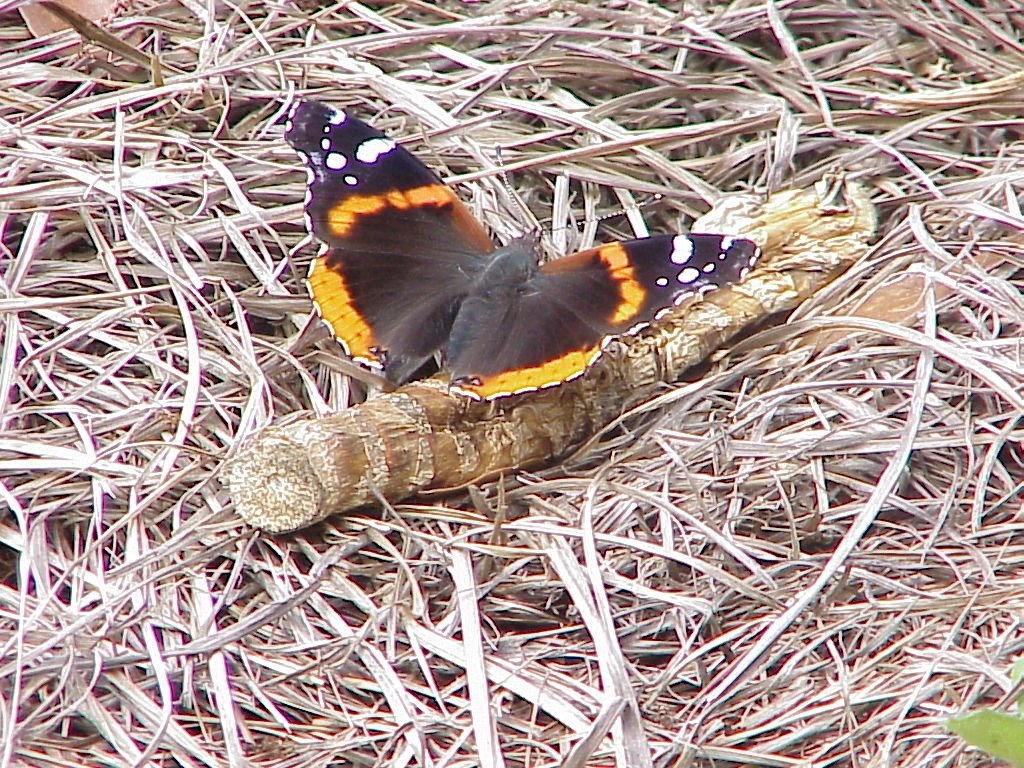
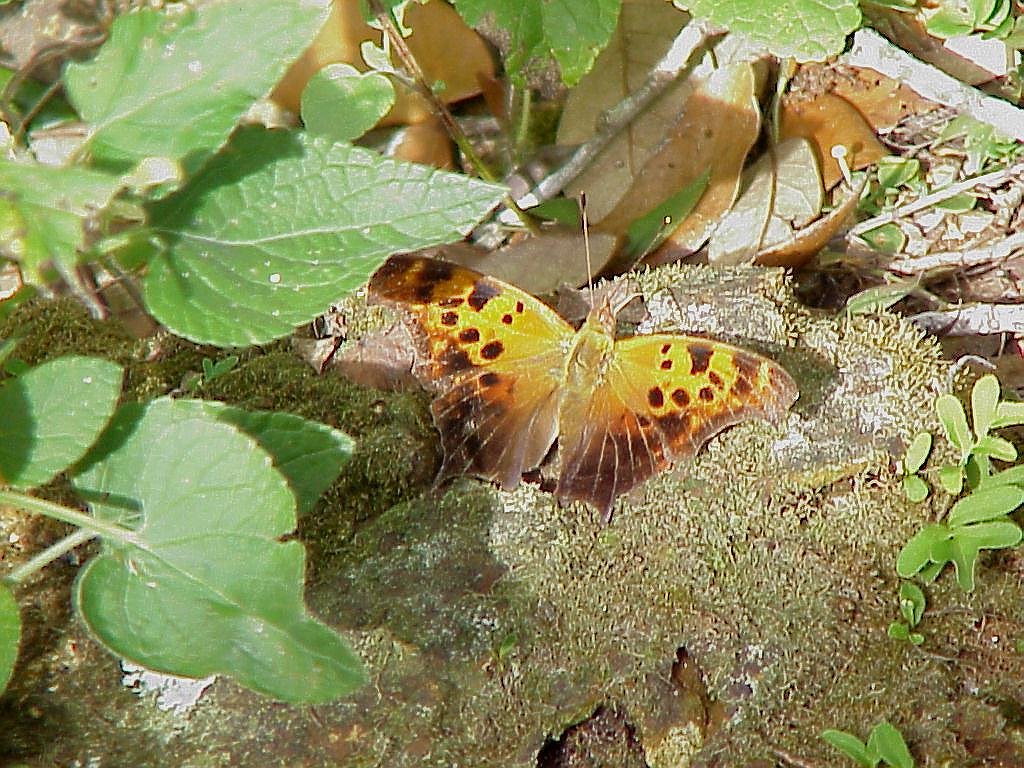
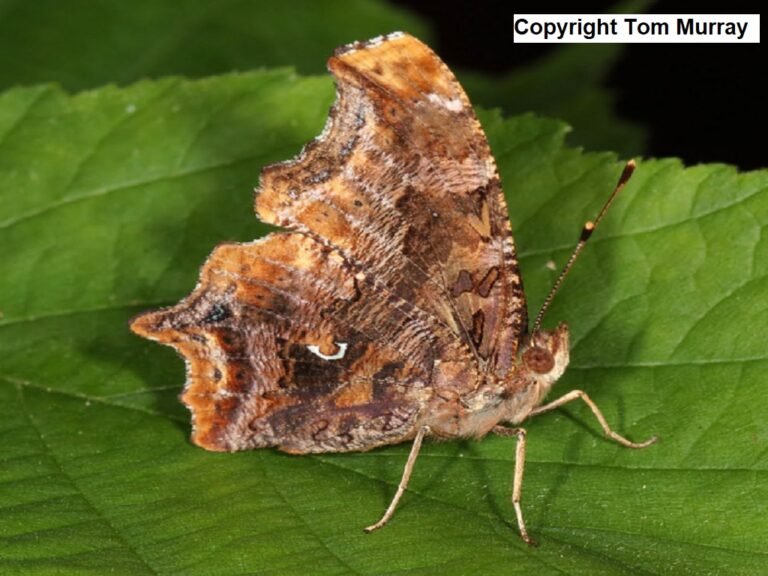
Propagation
It can be grown from seeds or transplants. I sell seeds at my Ebay Store here at this link – https://www.ebay.com/itm/257071127553.
When you consider it is usually a volunteer, or can be found for free in road side ditches, it really is a gift from nature.
It is easy to transplant which makes it even better. Remember when transplanting plants to remove most of the upper growth so the plant will be able to sustain the shock of being uprooted and moved. Once it gets reestablished it will start to put out new growth pretty quickly.
When starting from seeds barely cover them with fine soil because they are very tiny and if they get buried they will never germinate. Once germination begins wait for a second pair of leaves and if you want to divide them do it very gently with a toothpick or other small implement so you don’t damage the fragile roots.
